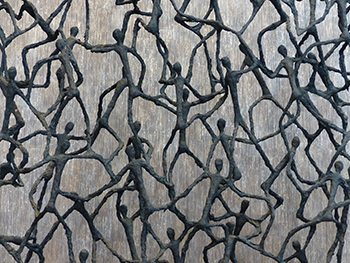"design education" entries

Simon King on design at IDEO
The O’Reilly Design Podcast: Team dynamics and culture at IDEO, design education, and design’s next big challenge.
Subscribe to the O’Reilly Design Podcast, our podcast exploring how experience design—and experience designers—are shaping business, the Internet of Things, and other domains. Find us on Stitcher, TuneIn, iTunes, SoundCloud, RSS.
In this week’s Design Podcast episode, I sit down with Simon King, director of Carnegie Mellon University’s Design Center. King is the author of Understanding Industrial Design. We talk about team dynamics and culture at IDEO, extending design education to non-designers, and design’s next big challenge.
Here are a few highlights from our conversation:
CMU’s Design Center and the designer shortage
The idea is behind the Design Center is to bring design to more students across the whole campus and to create new kinds of research opportunities to work with organizations from outside of the university as well. There’s really two levels to think about the designer shortage, and one is what I’m trying to do with the Design Center: increasing the overlap with design that many people might have, where there’s this idea that you’re able to hire someone who’s design savvy, or design literate, or can bring some of the tools of design to their core discipline. That helps, but the bottleneck of ‘there just aren’t enough really skilled designers coming out of master’s programs and that are true experts’—I don’t have a good solution to that. I look at it and I think, ‘design is something you have to learn by doing. You have to build up this set of experiences over time, and it just takes time.’ There’s no silver bullet in terms of meeting the increasing demand.
Combining it with formal education might be more about a bigger mindset shift and not as much about specific skill building. Another approach is something we’re seeing at CMU, where there’s now a variety of programs. At the master’s level in the School of Design, there’s now options for students that are one year in length, or two years in length, or if they didn’t come in with a design background previously, potentially up to three years in length. It used to be there was just a two-year master’s program. I think that universities are recognizing the need for flexibility there, so that, depending on people’s goals or the time commitment that they’re willing to put in, there’s options for them.

How to make a UX designer
Heather Wydeven talks about her entry into the field of UX and what helped her succeed as a new UX designer.
Where do new designers come from? In the case of Heather Wydeven, a UX designer at The Nerdery, she came to UX via theater and then graphic design. In a recent interview, Wydeven took the time to speak with me about her route to UX design, what it was like entering the UX field, what new designers should know, and how more experienced designers can help bring new designers into the fold.
After spending several years working in theater, Wydeven decided to channel her creative skills into a career in graphic design. She came to UX design without even realizing what UX was, but the root of her motivation was something that’s familiar to many UX designers: a recognition that things could be better and a desire to solve problems.
“While I was doing graphic design,” Wydeven said, “I started to become more curious about web design and UX design specifically, though at the time I didn’t know it was called ‘UX design.’ I was using websites and being frustrated about my experiences on those websites and thinking, ‘There’s got to be a way to make these better. This has got to be somebody’s job to design these websites better than they are now.’” Read more…
